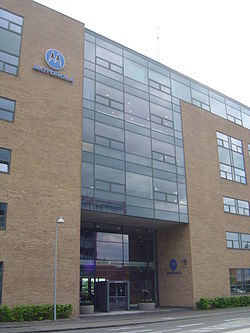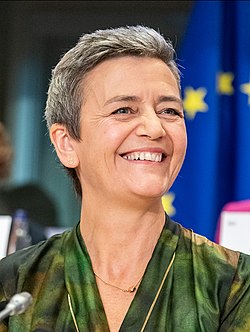Glostrup | |
|---|---|
 Hovedgaden, Glostrup's main street with the iconic water tower | |
| Coordinates: 55°39′46″N12°23′50″E / 55.66278°N 12.39722°E | |
| Country | Denmark |
| Region | Capital Region |
| Municipality | Glostrup |
| Population (2024) [1] | |
| • Urban | 23,540 |
| • Municipality | 23,650 |
| Time zone | UTC+1 (CET) |
| • Summer (DST) | UTC+2 (CEST) |
| Postal code | 2600 |
| Website | http://www.glostrup.dk/ |
Glostrup is a Danish town in Region Hovedstaden, forming one of the western suburbs of Copenhagen. It is the administrative seat of Glostrup Municipality, with an estimated population of 23,540 as of 2024 [update] . [1]
Contents
- History
- Early history
- 19th century
- 20th century
- Housing
- Transport
- Rail
- Road
- Notable people
- Sport
- See also
- References
- External links


During the 20th century Glostrup developed from a small railroad town into a modern middle class suburb. The population reached a peak during the 1970s flight from central Copenhagen, but has since stabilized. While most of Copenhagens western suburbs are dominated by public housing projects, Glostrups mix is around the Danish average. A series of large companies, e.g. Grontmij's and Motorola's Danish sections, along with NKT Holding and Pandora are situated in the area. Along with the surrounding municipalities, it forms the center of Copenhagen's productive industry. Glostrup Municipality has a total of 21,200 jobs in the private and public sectors combined. [2]
Glostrup is also home to a series of public offices and institutions, e.g. Københavns Vestegn Police Departement and Glostrup Court, covering the western and northern suburbs of Copenhagen. Glostrup Hospital was inaugurated in 1958 and employs 3,200 people.



